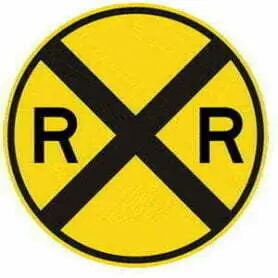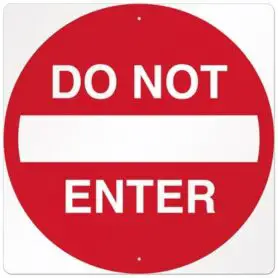Imagine you find yourself at a four-way stop, surrounded by other drivers eagerly waiting to navigate their way through this traffic puzzle. As you sit behind the wheel, a question pops into your mind: who exactly has the right of way?
Well, my friend, buckle up and let's untangle this intricate web of road etiquette. In this discussion, we will explore the rules that govern these intersections, shedding light on the rightful path for each vehicle.
So, without further ado, let's dive into the world of four-way stops and uncover the secrets behind who truly holds the power.
Understanding the Basic Rules
To safely navigate a four-way stop, it's crucial to understand the basic rules governing right of way. At a four-way stop, each vehicle must come to a complete stop at the stop sign. After stopping, the general rule is that the first vehicle to arrive at the intersection has the right of way. If multiple vehicles arrive simultaneously, the vehicle on the right has the right of way. It's important to yield to the vehicle on your right to avoid confusion and potential accidents.
When approaching a four-way stop, it's essential to be aware of other drivers and anticipate their actions. Use your turn signals to indicate your intentions, whether you're turning or proceeding straight. This helps other drivers understand your intentions and makes the intersection safer for everyone.
Remember to always be patient and courteous at a four-way stop. Even if you have the right of way, it's important to yield to pedestrians and cyclists. They've the right of way and should be given enough time to cross the intersection safely.
Yielding to the First Arrived Vehicle
When yielding at a four-way stop, it's crucial to determine which vehicle arrived first to determine who's the right of way. According to the right of way definition, the first arrived vehicle has the right of way. This means that if you're the first one to arrive at the four-way stop, you have the right to proceed through the intersection before any other vehicles.
Yielding to the first arrived vehicle is one of the basic right of way rules at a four-way stop. It helps to ensure a smooth flow of traffic and prevent accidents. By giving priority to the first arrived vehicle, you're promoting safety and order on the road.
To determine who arrived first at the four-way stop, pay attention to the order in which vehicles approach the intersection. The vehicle that comes to a complete stop first should be given the right of way. If multiple vehicles arrive simultaneously, the vehicle to the right generally has the right of way.
Navigating Through Simultaneous Arrivals
Determining the order of arrival becomes crucial when multiple vehicles reach a four-way stop simultaneously. Navigating through simultaneous arrivals at a four-way stop can be a bit tricky, but understanding the right-of-way rules can help ease the process.
In this context, right-of-way refers to the privilege of proceeding before other vehicles. When faced with a simultaneous arrival situation, the general rule is that the vehicle on the right has the right-of-way. However, if two vehicles are facing each other and intend to proceed straight, both vehicles can move forward simultaneously. This is known as the 'courtesy wave' where both drivers acknowledge each other and proceed cautiously.
In cases where all vehicles arrive at the same time, it's important to communicate and coordinate with other drivers to determine the order of arrival. This can be done through hand gestures or eye contact.
Handling Four-Way Stops With Traffic Signals
Handling four-way stops with traffic signals is a straightforward process when following the designated light signals and right-of-way rules.
At a four-way stop controlled by traffic signals, the traffic lights dictate the right of way. When the light is green, you have the right of way to proceed through the intersection. However, it's important to remain cautious and yield to any pedestrians or vehicles that may still be in the intersection.
When the light is yellow, it's a warning to prepare to stop. Slow down and prepare to yield to any oncoming traffic or pedestrians.
When the light turns red, you must come to a complete stop. It's essential to wait until the light turns green before proceeding through the intersection.
It's important to always adhere to the traffic signals and not assume that other drivers will do the same. Following the designated right-of-way rules and traffic signals ensures a safe and efficient flow of traffic at four-way stops controlled by traffic signals.
Handling Four-Way Stops Without Traffic Signals
To navigate a four-way stop without traffic signals, you must adhere to the right-of-way rules and proceed cautiously. When you approach a four-way stop, remember that the vehicle on the right has the right of way. If two vehicles arrive at the same time, the vehicle on the right should proceed first.
It's important to come to a complete stop at the stop sign and yield to any pedestrians or cyclists in the intersection. When it's your turn to proceed, do so with caution, looking out for any approaching vehicles or pedestrians. It's crucial to maintain eye contact with other drivers to ensure everyone is aware of each other's intentions.
Frequently Asked Questions
What Are the Consequences for Not Following the Right of Way Rules at a Four-Way Stop?
Not following the right of way rules at a four-way stop can have serious consequences. Failing to yield when it's your turn can result in accidents, injuries, and even fatalities.
It's important to remember that the rules are in place to ensure the smooth flow of traffic and prioritize safety. Disregarding these rules can lead to legal consequences, such as traffic citations or even license suspension.
Are There Any Exceptions to the Right of Way Rules at a Four-Way Stop?
At a four-way stop, it's important to know who's the right of way. But are there any exceptions to these rules?
Well, the general rule is that the first vehicle to arrive at the intersection gets to go first. If two or more vehicles arrive at the same time, then the vehicle on the right has the right of way.
However, there may be exceptions in certain situations, such as emergency vehicles or when directed by a traffic officer.
How Can Drivers Communicate With Each Other to Determine Who Goes First at a Four-Way Stop?
To determine who goes first at a four-way stop, drivers can communicate with each other using a few simple methods. You can make eye contact with the other drivers and use hand signals to indicate your intentions.
A friendly nod or wave can also help establish a mutual understanding. Remember to be patient and respectful, allowing the driver on your right to proceed first.
Effective communication is key to ensuring a smooth and safe flow of traffic at a four-way stop.
What Should I Do if There Is a Pedestrian Waiting to Cross at a Four-Way Stop?
If there's a pedestrian waiting to cross at a four-way stop, you should yield to them. It's important to prioritize the safety of pedestrians and allow them to cross the intersection safely.
Even if it's your turn to go, be patient and let the pedestrian cross first. Use hand signals or make eye contact to communicate your intentions with the pedestrian.
Is It Legal to Turn Right on a Red Light at a Four-Way Stop?
Yes, it's legal to turn right on a red light at a four-way stop, unless there's a sign specifically prohibiting it. However, you must still yield to any pedestrians or vehicles that have the right of way.
It's important to come to a complete stop before making the right turn and to proceed with caution. Remember to always be aware of your surroundings and follow all traffic laws to ensure safety for yourself and others on the road.
Conclusion
In conclusion, understanding the rules of right of way at four-way stops is essential for safe and efficient traffic flow. The basic rule is to yield to the first arrived vehicle, but when multiple vehicles arrive simultaneously, the vehicle on the right has the right of way.
Additionally, traffic signals may dictate the right of way, while in the absence of signals, drivers should exercise caution and communicate with other drivers to determine who goes first.
Following these guidelines will help ensure smooth and orderly traffic interactions at four-way stops.





